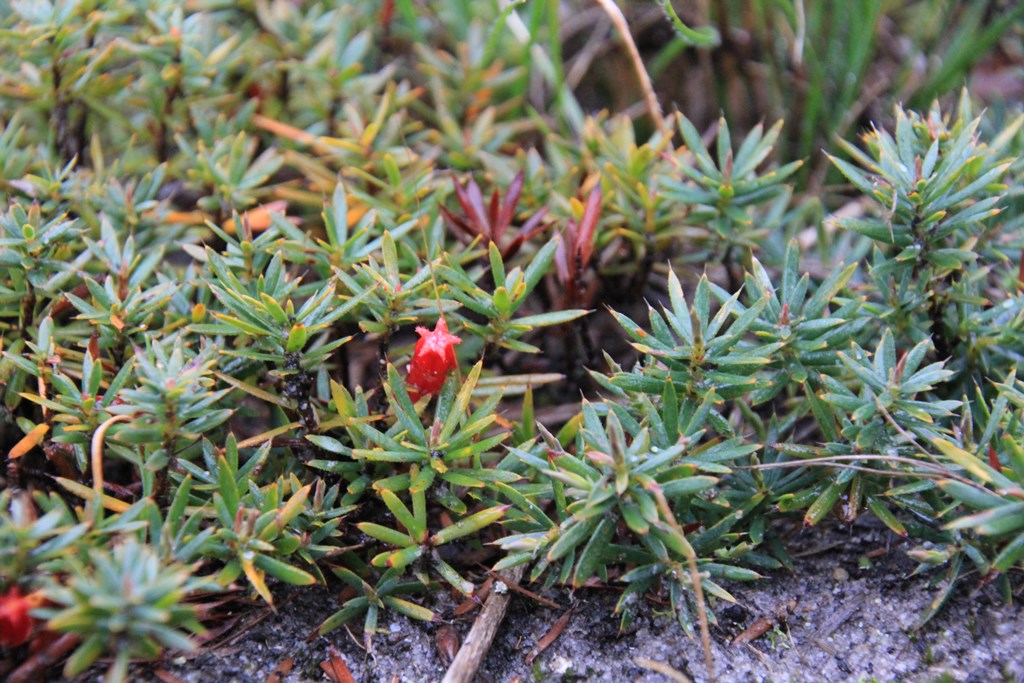Although Cranberry Heath is already on the plant species list, I initially misidentified it, and the post is not as specific as it should be. Here are two photographs taken in June of a small Cranberry Heath plant growing alongside the dam.
The red flowers are tubular, with a star-shaped opening. The Latin name reflects this shape – Astro = ‘star’ and ‘loma’ = fringe. This is new information for me, courtesy of Enid Mayfield’s book Flora of the Otway Plain and Rages 2 and is something that will stay with me. Mayfield also explains that the second part of the Latin name ‘humifusum’ means ‘covering the ground’ and this is a small but dense ground cover plant which forms a small mat.
Over the past two years I have found about six to ten individual Cranberry Heath plants. Three of these are near the dam, and a few are in the natural bushland. I haven’t noticed any growing in the grassed areas.
The flowers on our plants are about 10mm long, but very thin, and according to Mayfield appear between January and June. I think ours flowered from around April to June, perhaps because we had a hot, dry, Summer and Autumn. Often the flowers nestle beneath the spiky leaves. Apparently the plant does produce a fruit, but I haven’t noticed any. I suspect the wildlife find them first. This is another plant the Swamp Wallaby seems to enjoy eating.



